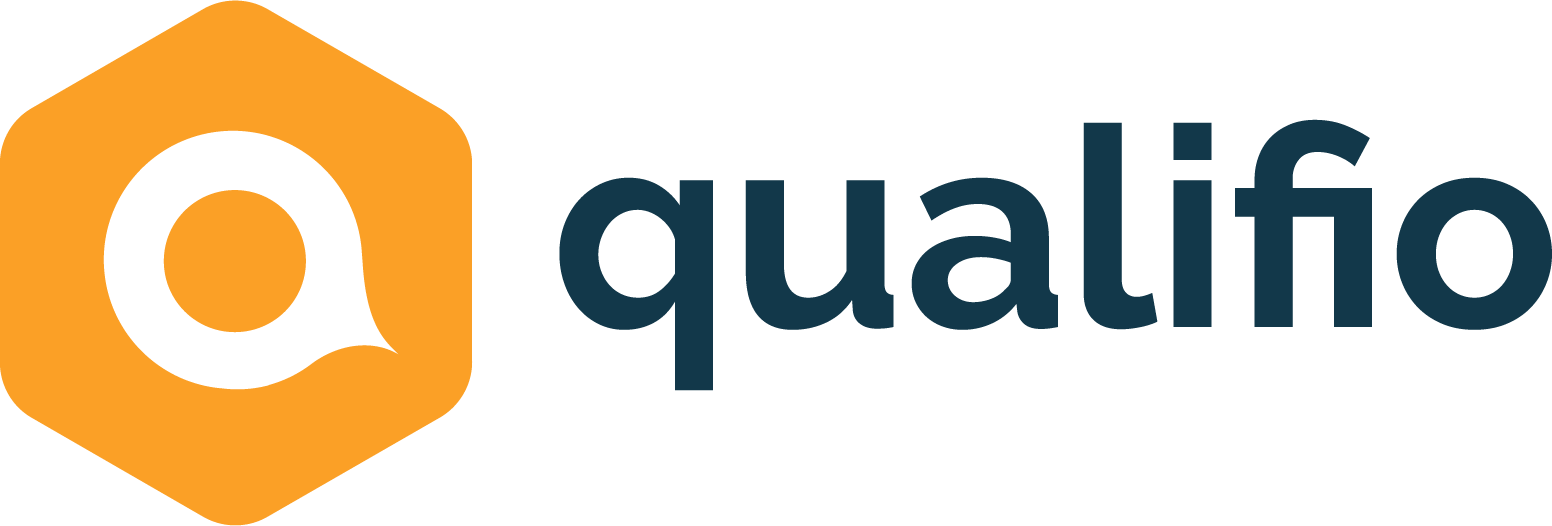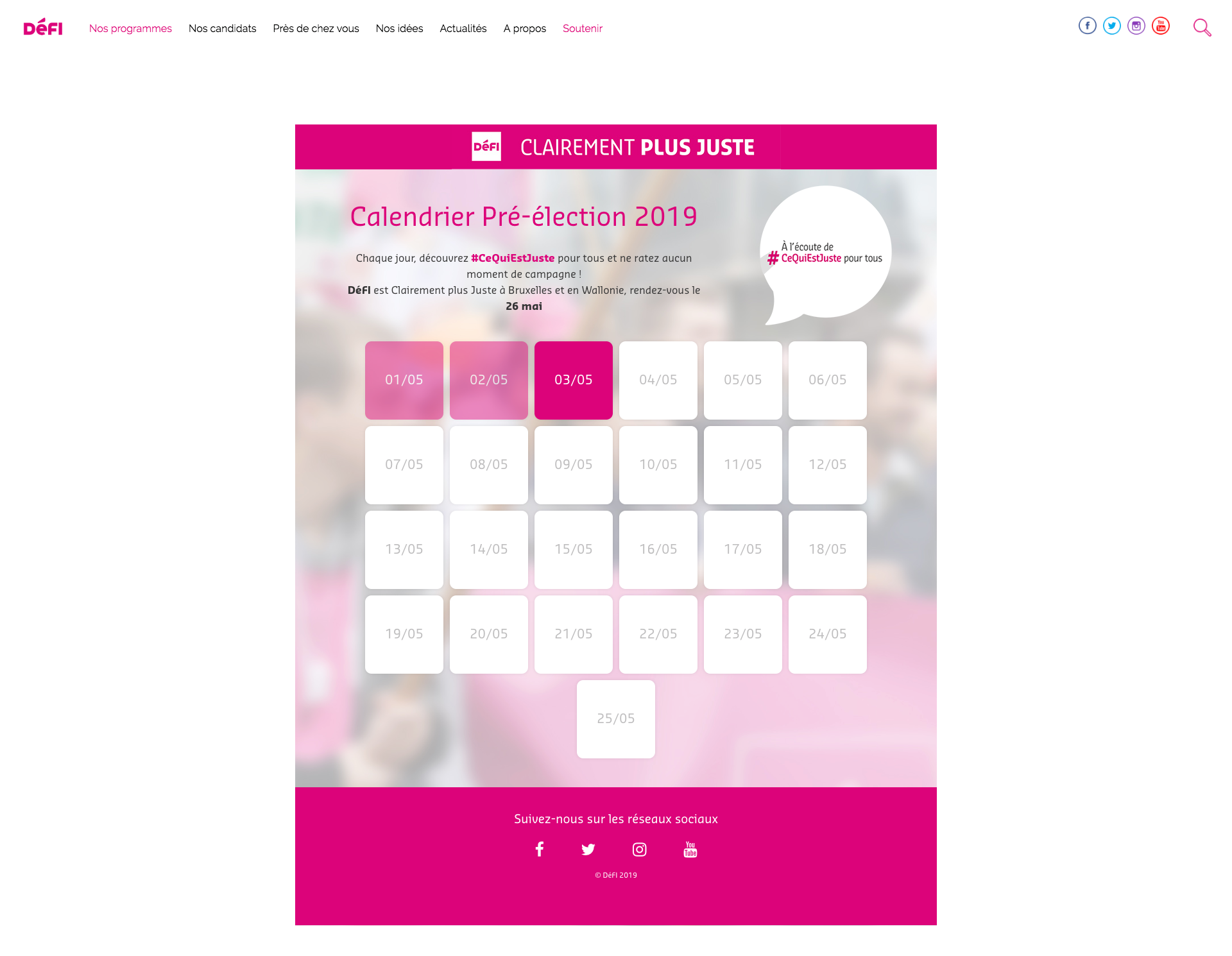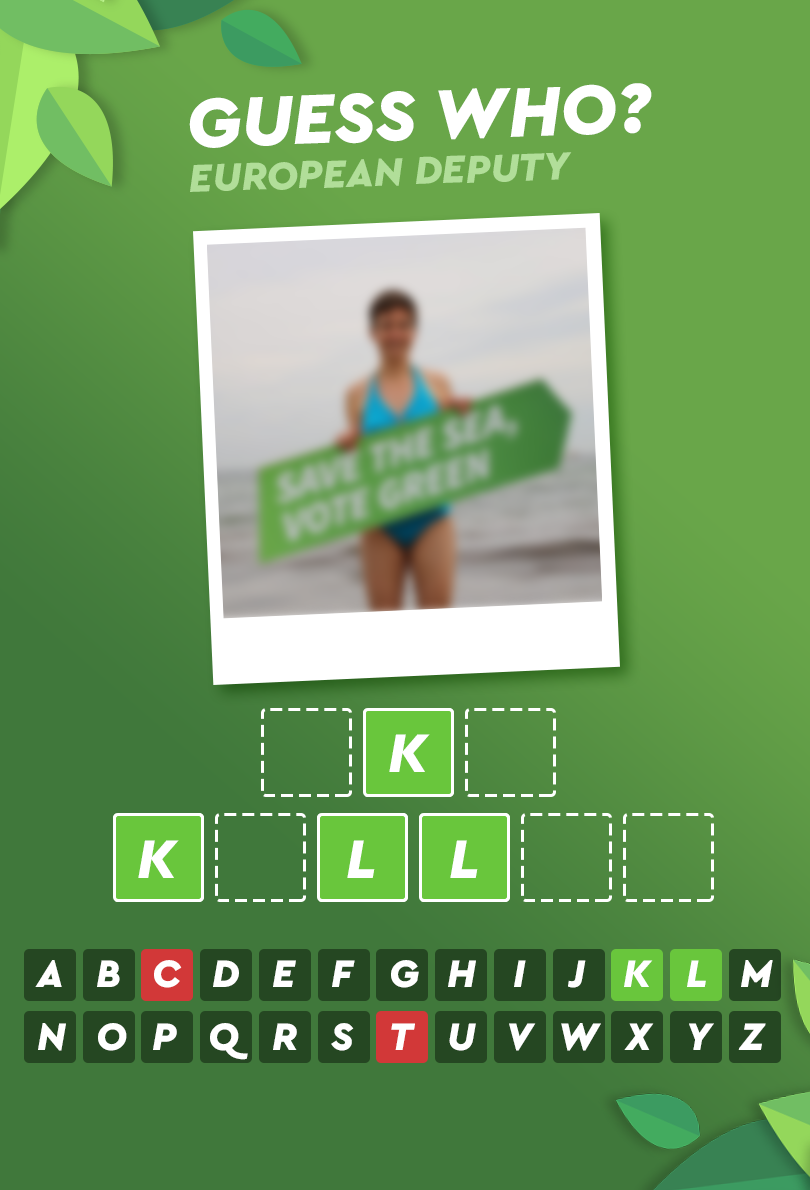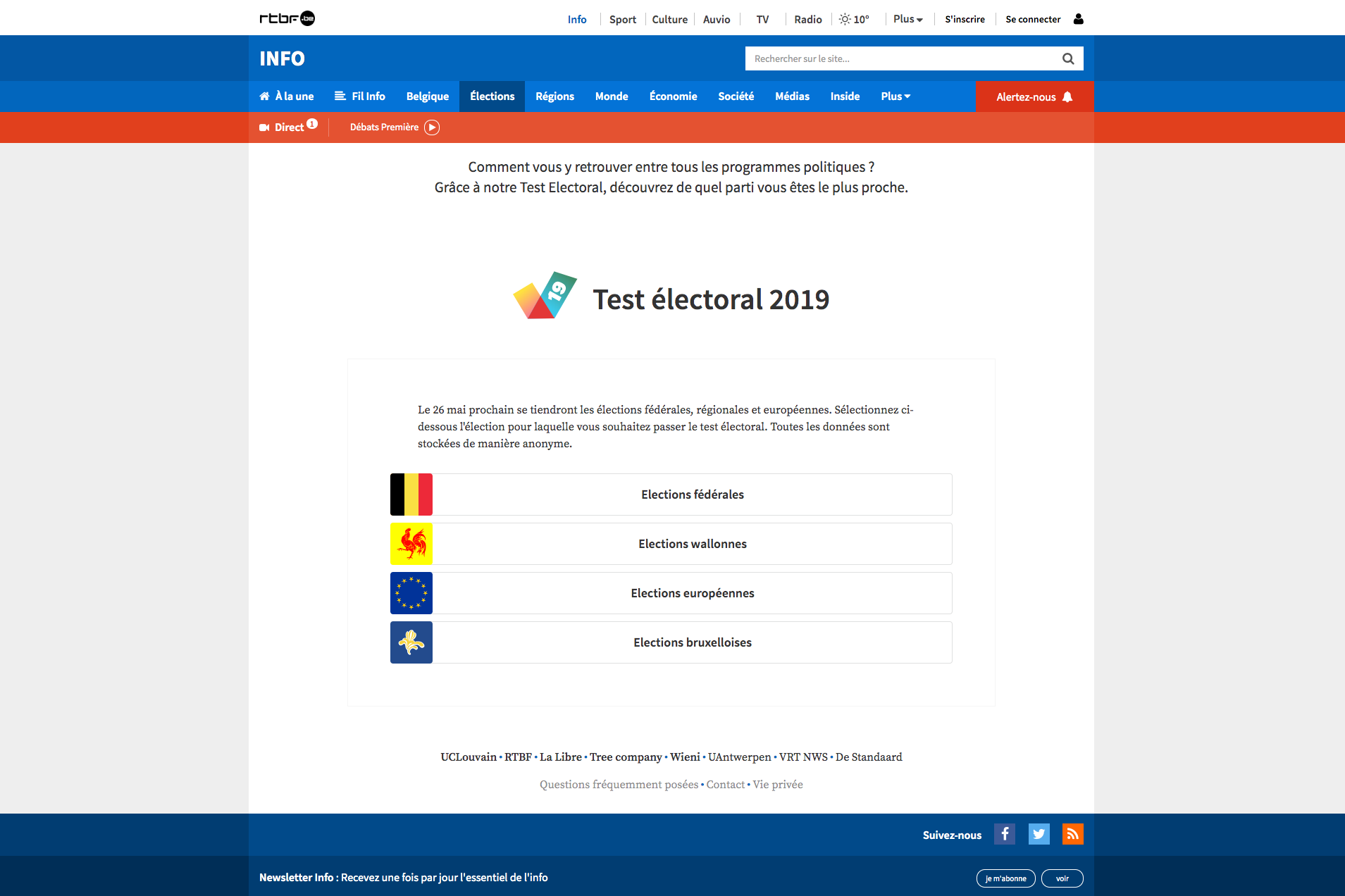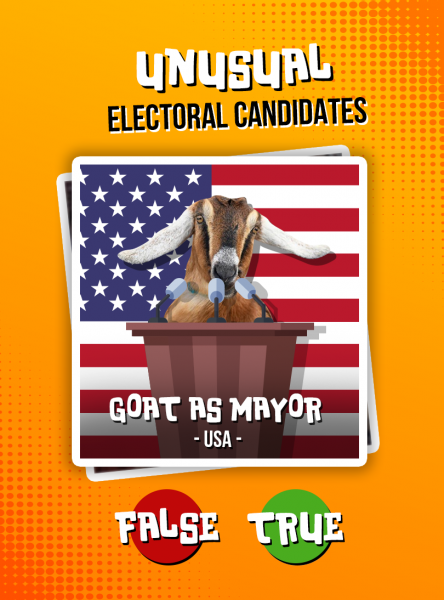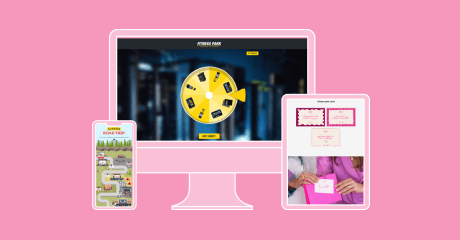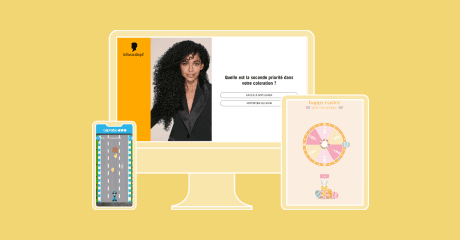Elections 2019: how to use interactive content to engage your audience
European elections will be held between 23 and 26 May 2019 depending on the country. Citizens across Europe will have to elect the Members who will sit in the European Parliament for the next 5 years.
For journalists, editorial managers and marketing professionals, the elections also represent a unique opportunity in terms of content, engagement and data collection. How can you take advantage of this opportunity to interact with your audience? Discover our interactive content ideas to use before, during or after the election period.
Marketing campaigns before the elections
1. Use an interactive awareness campaign
That’s exactly what the Belgian party DéFI (Democratic Federalist Independent) did. On May 1, 26 days before the elections, the party launched a “pre-election calendar” published on its website and Facebook page. Every day, until May 26, a new box will open to unlock exclusive content. An original and interactive way to increase the party visibility, virality and be top of mind on polling day.
2. Combine the playful and informative side in your campaign
Make the pre-election period more fun with the game of “Guess who?”. Challenge your users to find the name of the political personality or party represented behind a deteriorated image (blurred or pixelated). Give your participants a clue (keywords, video, image, sound) to make their task easier.
Once the personality found, post a summary of their ideas and party to provide your participants with additional information.
3. Learn more about your users while offering them useful content
The personality test is the ideal format to segment your audience. Not only participants learn more about themselves, discovering the profile that suits them the best based on their answers, but you can also use these profiles to segment your participants or even your email list. If you are interested in learning more about this subject, we explain how quizzes and personality tests allow you to segment your customers.
One of the best examples is the electoral test created by RTBF (Belgian RadioTelevision Broadcasting of the French Community of Belgium) for the federal, regional and European elections. After answering different questions on various topics (climate, employment, immigration, etc.), participants discover which party they are the closest to. They can then share their results and their test on their social networks directly or via email.
Alternative: use the checklist format. Invite your participants to pick the topics they find most important to make their choice for a party (European army, relief for migrants, taxes on a particular product, press freedom, etc.). Then display the party that best suits them according to the topics they have selected.
4. Give the floor to your audience
Let your users express their convictions, for example by asking them to compose their ideal government. Invite them to associate a political figure (or not) with a position from a list of your choice. Then display the ideal selection of each participant and allow them to share it on their social networks.
Marketing campaigns during the elections
1. Survey your visitors and display the results live
This is what Microsoft News did with a survey “And you, what do you think?” integrated into its article “25.000 signatures to question Members: a cosmetic participatory democracy? ». Once the survey was completed, gauges were displayed with different trends.
You can also ask your users who they think they will vote for, via a poll or a battle, and display gauges with their voting intentions.
Marketing campaigns after the elections
1. Create a campaign with the highlights of the elections
Elections also mean unusual situations, slip-ups, funny election posters or even improbable candidates. Take the opportunity to interact creatively with your audience via the swiper format. Imagine a true or false or a top and flop quiz in which participants have to “swipe” left or right to answer your questions.
